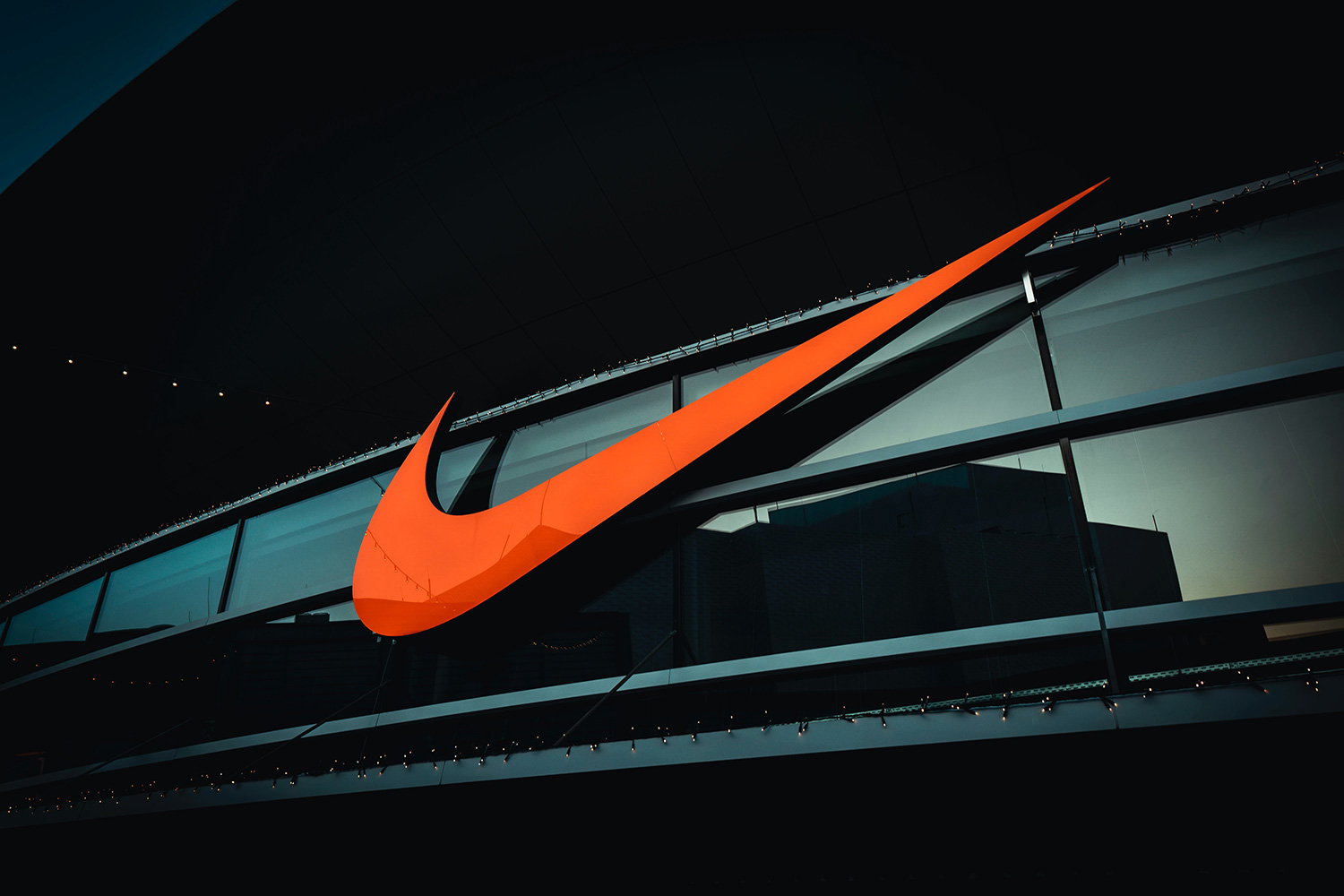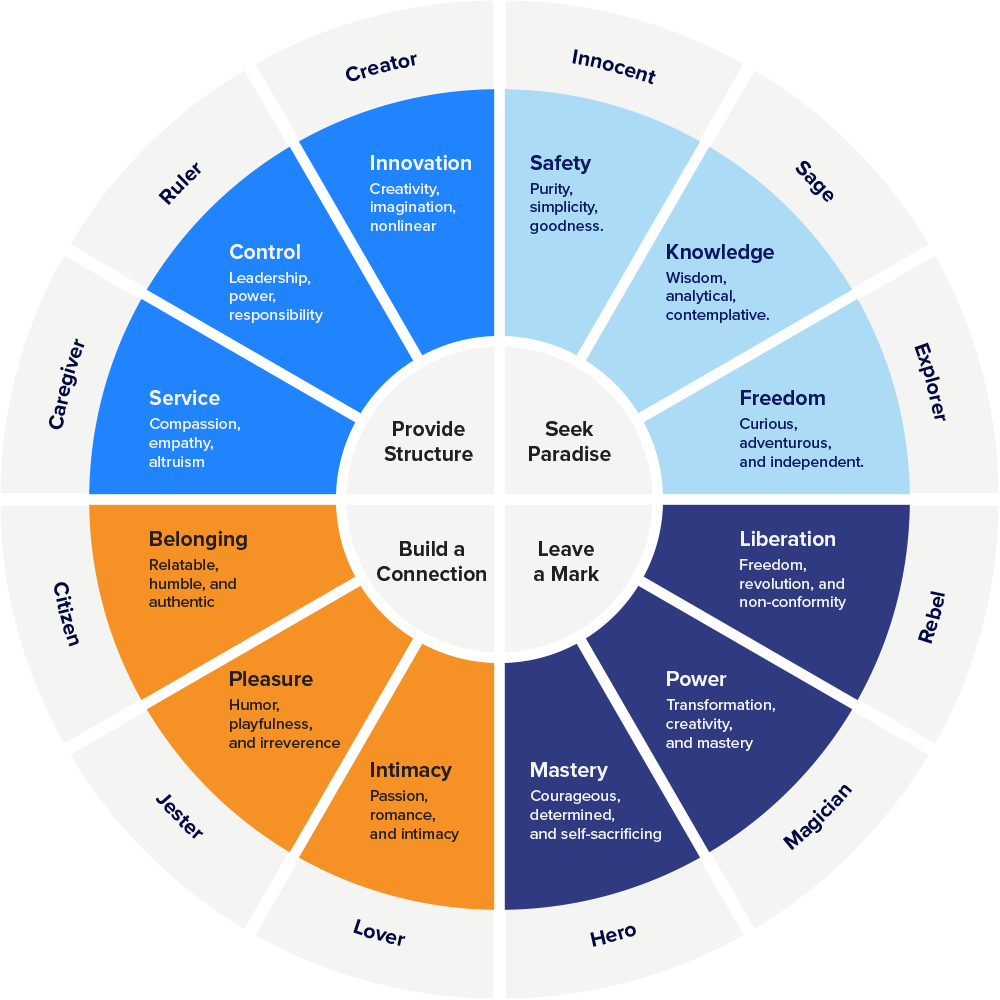We all have brands we really connect with. Those brands that just ‘get’ us. Well, that’s not by chance. In fact, it’s a very purposeful marketing strategy designed to connect us with brands through emotion and personality. The foundation of this strategy is based on the 12 brand archetypes. In short, the archetypes allow businesses to take on human characteristics based on their brand identity and values to create a connection with their target market.
Usually, the relationship between business and consumer is transactional – someone pays money for a product or service. The problem with this is that it doesn’t evoke any brand loyalty or a drive to buy again, outside of that person’s impression of the product. But when brands take on human characteristics using the 12 archetypes, they can connect with that same audience on a much deeper, emotional level. The market starts relying on those brands for things like inspiration, information or affirmation. And of course, they’re way more likely to purchase their products because of it.

Think about Nike. Immediately you think about how much they inspire people to be, and do, better. They’re your biggest cheerleader on a track or in a pool or wherever else you’re trying to beat your personal best. That’s because they’ve taken on ‘The Hero’ brand archetype.
This archetype is
- courageous,
- confident and
- ever-positive.
And people buy into Nike because those characteristics appeal to a deep part of themselves. For them, Nike is not just a sporting goods company. It’s their inspiration to get out of bed and go and exercise. It’s their motivation to push themselves. And it’s their affirmation, someone who’s always there to tell them they can ‘just do it’, no matter what ’it’ is.
Brand archetypes are an effective way of attracting more people to a brand, creating strong connections with them, and ensuring that those people become lifelong customers. Now, let’s get into exactly what the archetypes are and how they work so well.
Do brand archetypes work?
If the product is the ‘what’, a brand’s archetype is the why. And it is the ‘why’ that drives loyalty. If a brand tried appealing to its market’s rational mind by speaking about its product, the market would immediately start to weigh up whether it was a good product or not. But by appealing to their emotions, the brand is able to connect with their market by connecting their characteristics with the market’s characteristics.
Now, instead of selling something to a market, they’re almost… friends with them. And the more the brand leans into this approach, the tighter that friendship becomes. Until the two are so close that they’re family, and that person is a customer for life. Brand archetypes are effective because they allow a deeper connection to form between the brand and its audience – rather than a simple transactional connection (the market simply paying money for a product or service).
Where do brand archetypes come from?
We owe our knowledge of brand archetypes to the brilliant Swiss psychiatrist, Carl Jung. He unveiled his personality archetypes way back in 1919, laying the foundation for what we now call the 12 brand archetypes.
Jung’s theory revolves around the idea that every human possesses a dominant trait that shapes their behaviour, desires, values, and motivations. These traits are like the building blocks of our personalities.
What’s fascinating is that these very ‘archetypes’ were not limited to individuals alone. Brands can adopt them too! Businesses can tap into these archetypes to craft brand personalities that strike a personal and emotional chord with their target audience. It’s like understanding the DNA of human behaviour and then using it to create brands that resonate deeply with people.
Now, let’s explore the 12 archetypes and their unique characteristics.
The Brand Archetypes
There are 12 brand archetypes. They cover the spectrum of characteristics, from excited to formal to warm and fuzzy. In most cases, brands have a leading archetype and a secondary one. This is because, like people, most brands can’t be defined by a single archetype.
The Innocent
The Innocent’s goal is to be happy. These brands strive to be good, pure, and optimistic. They are big on being moral, they keep it simple and they are romantic and loyal.
By taking on this archetype and communicating to your market accordingly, you’ll be seen as trustworthy, reliable and honest. These brands are associated with morality and connect with their audience through their shared good virtues.
Coca-Cola is the perfect example of The Innocent archetype.
The Citizen
These brands exist to connect and belong with others. They are down-to-earth, supportive and faithful, folksy. Many of these brands are seen as the ‘person next door’. The Regular Guy or Gal instils a sense of belonging into their market, they connect with people by offering a sense of belonging and common ground.
IKEA is the perfect example of The Citizen archetype.
The Hero
The hero exists to improve the world and themselves. This archetype is bold, courageous, honourable, strong, confident and inspirational. These types of brands inspire their markets to do better, and connect with them through a shared need to make a positive and lasting mark on the world.
Nike is the perfect example of the Hero archetype.
The Outlaw
The Outlaw is all about breaking the rules, disrupting and challenging the status quo. These brands are rebellious, wild, maverick and pave the way for change in the world. They connect with their audience through a shared need to change or challenge how people do things.
Harley-Davidson is the perfect example of The Outlaw archetype.
The Explorer
The Explorer finds fulfilment in curiosity, discovery and new experiences.
These brands are restless, adventurous, ambitious and pioneering. They connect with their market through their shared need to take risks and explore.
Jeep is the perfect example of The Explorer archetype.
The Creator
These brands live to create new things that hold meaning and value. The Creator is creative, imaginative, artistic and inventive. They connect with people through a shared need to express themselves and their creativity.
Lego is the perfect example of The Creator archetype.
The Ruler
The ruler seeks control and has the need to create order from chaos. These brands are leaders, they are responsible, organised and want to be seen as role models. They aim to help create more stability and security in a chaotic world.
Microsoft is the perfect example of The Ruler archetype.
The Magician
These brands exist to make dreams come true. They live to create something special and memorable. The Magician is charismatic, imaginative and idealistic, connecting to an audience through a shared need to inspire change and transform people’s worlds.
Apple is the perfect example of The Magician archetype.
The Lover
The Lover aims to create intimacy and inspire a sense of love. These brands are passionate, intimate, romantic, warm and committed.
They connect with their audience by helping them feel appreciated, and like they belong to something deep, personal and meaningful.
Lindt Chocolate is the perfect example of The Lover archetype.
The Caregiver
The Caregiver exists to care for and protect other people. These brands are caring, maternal, nurturing, selfless, generous and compassionate.
They connect with their audience by helping them care for themselves, and by serving the public through health care, education or aid programs.
Dove is the perfect example of The Caregiver archetype.
The Jester
The jester just wants to bring joy to the world. These brands are irreverent, fun, light-hearted, mischievous and have a great sense of humour. They connect with their audience by creating a good time where people can relax and be themselves.
Victoria Bitter is the perfect example of The Jester archetype.
The Sage
These brands exist to help the world gain wisdom and insight into different subjects. They are knowledgeable, wise, intelligent, thoughtful, analytical and are a trusted source of information. The Sage connects with its customers by helping people better understand the world around them, by providing practical information and analyses.
Google is the perfect example of The Sage.
Finding the right archetype for your brand
We have developed our own assessment tool to help you determine your brand’s archetype. When undergoing the brand archetype test, it’s important to be as honest as possible. It’s also important that your choices represent what the brand is today and what you would like it to be in the future. This will mean that the result you get will be authentic to who the brand is today, but will also represent who you want the brand to become in the minds of consumers. You’ll then be able to communicate to your market in a way that builds your brand’s future persona into their minds.
Finding the right archetype for your business is essential for long term success. It doesn’t just inform the way you communicate, but who to communicate with and what kind of communication your market is likely to engage with. When a brand knows its archetype, it can instil a sense of humanity and meaning in the minds of its market. This takes that brand from a transactional relationship (money for goods or services) to a meaningful one that is earning real estate in their market’s hearts and minds.
Here’s an overview graph of the different archetypes and their characteristics –

What’s next?
Finding your brand’s archetype is the beginning of an exciting, and potentially very profitable journey in marketing and communicating your business. Once you know your brand archetype, you’ll have deep insight into the way to approach your audience.
At Pixeld, we understand that helping a business discover its brand archetype is key to long-term success. We create bespoke brand communication plans that don’t just connect brands with the right audience emotionally, but ensure that those people remain committed to that brand for a long time. Get in touch with one of our marketing experts to get started on your brand’s archetype journey today.